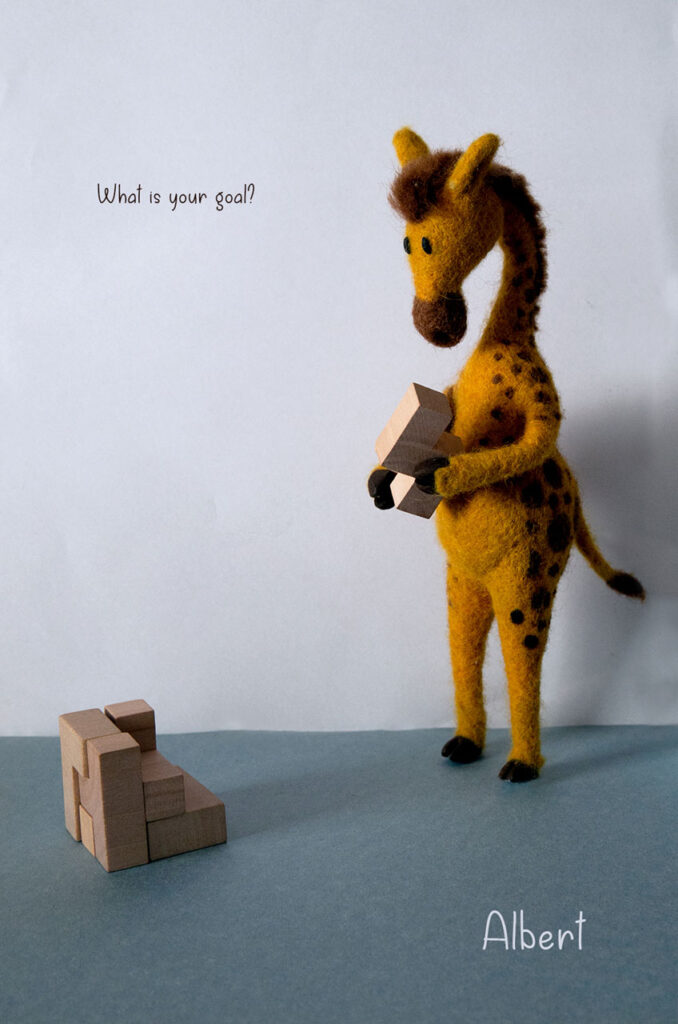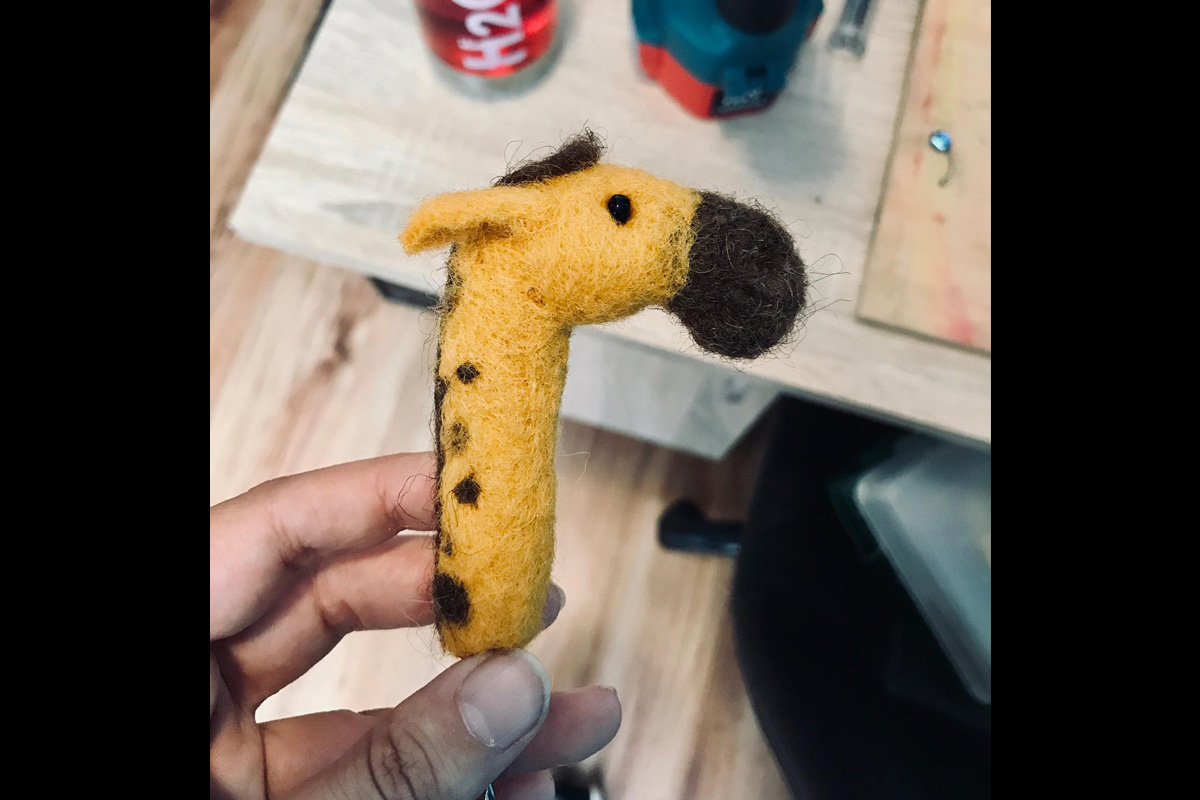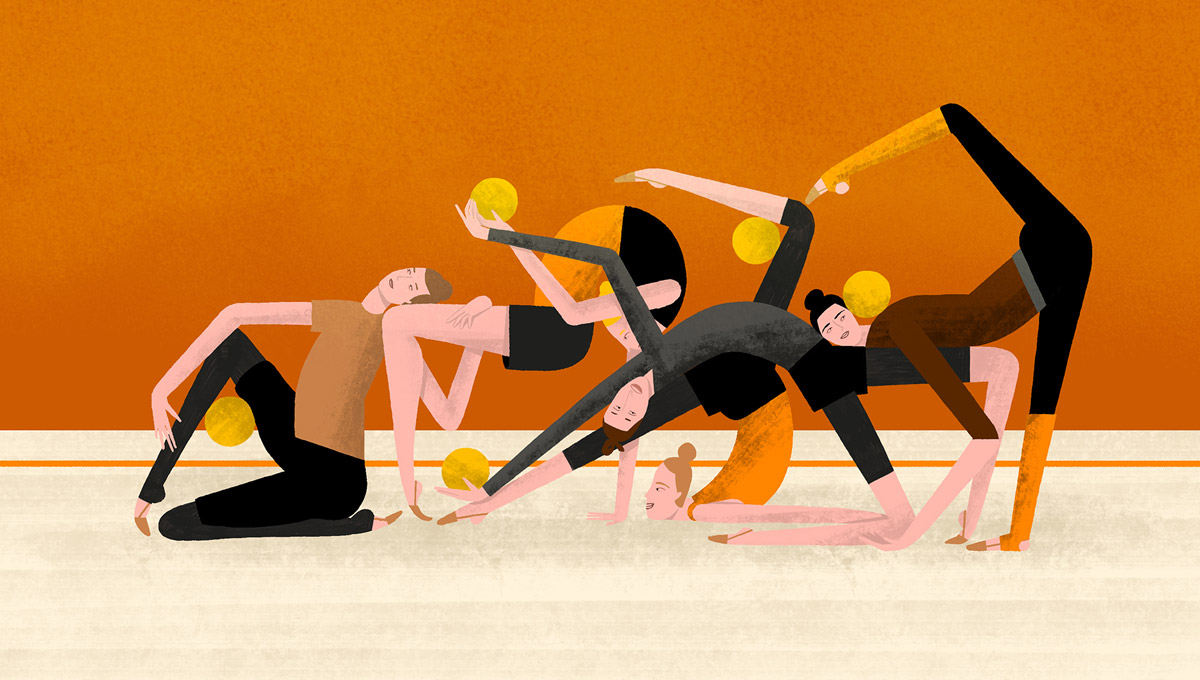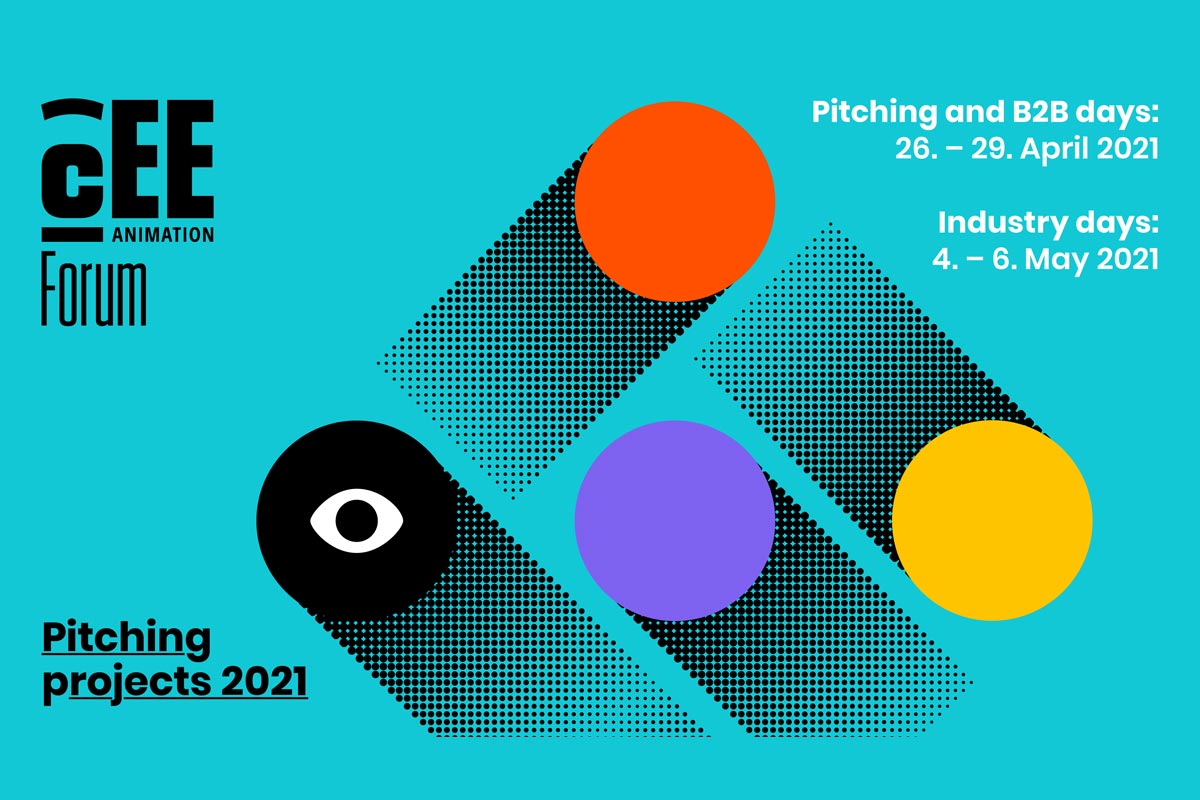Albert
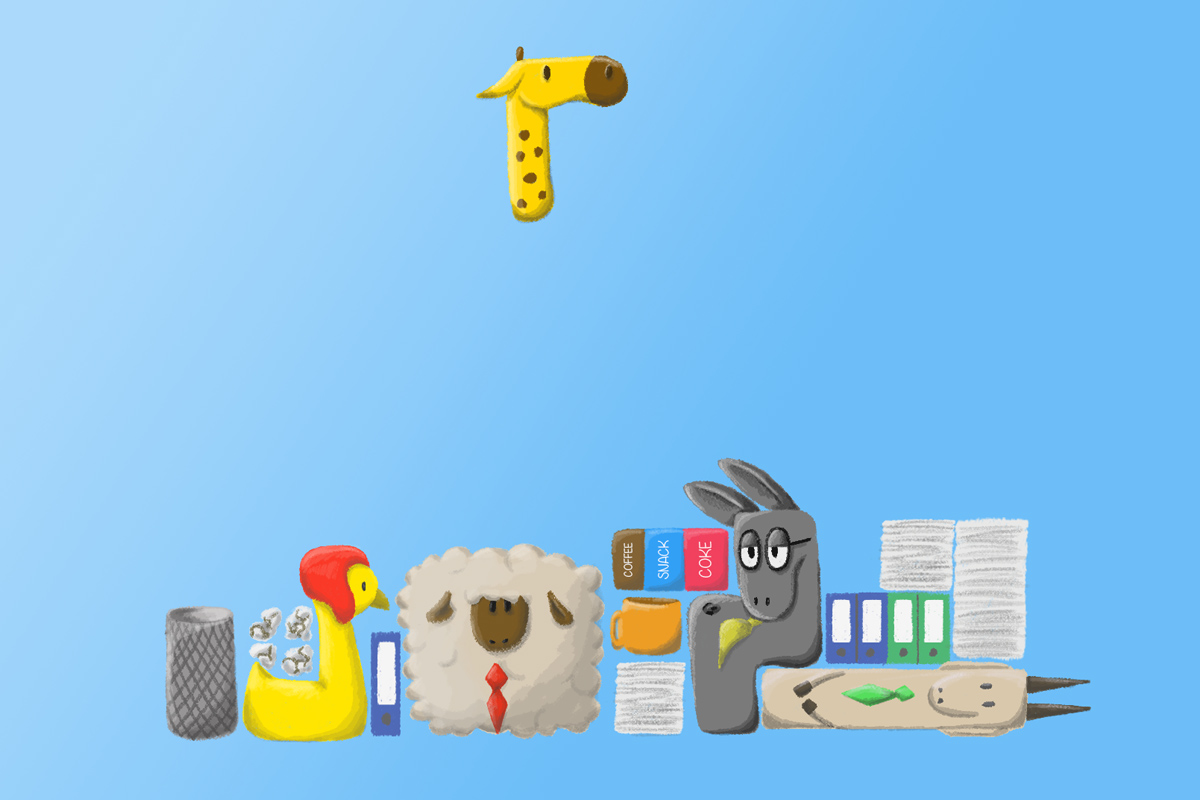
Synopsis
Albert’s life is orderly, he is efficient and punctual in his work, he is always a worker of the month, satisfied with himself. His only problem is that his colleagues haven’t noticed his captivating personality yet. He does his best to help the everyday lives of those around him with his experiences. He draws attention out loud when they’re littering, remarks if there’s a mess on their desk, and doesn’t hesitate to tell his boss how he could work more efficiently. Despite all these helpful deeds, no one calls him to have coffee, he is often left alone in the office and doesn’t understand what’s going wrong. Their resistance equips Albert even more for action, so he resorts to increasingly drastic methods to open his colleagues’ eyes. The most important thing is that everything is perfect. The film shows Albert’s personality development through his peculiar perfectionist worldview, where life is like a huge ‘Tetris®’ game.
Albert
Director: Szandra Pataki
Producer: Krisztina Endrényi (Mythberg Films, Hungary)
Format: 12’
Target audience: 12+
Technique: Stop-motion
Albert is a stop-motion short film project which will tell a story dealing with empathy and personal happiness. That topic of the story will be depicted through a relationship between a perfectionist protagonist and his colleagues in an office with unique metaphors, such as portraying the characters as anthropomorphic animals and organising the office desk as in the video game Tetris®. Here, we would like to introduce the film project with words from the director Szandra Pataki.
Interview with Szandra Pataki
Hideki Nagaishi (HN): Could you let us know the key points of your new animated short film project that you would like to appeal to the prospective audience?
Szandra Pataki: It’s a stop-motion animation short film about a neurotic perfectionist giraffe, Albert, who wants to help his colleague’s life, to give advice on how they can reach happiness. We watch the film all the way through Albert’s perspective, where the world is like a life-size Tetris® game. Based on this, we can easily categorize who is perfect for Albert and who is not. At first we see the helping intent in the protagonist, but the film reveals his real motivation to be very lonely. However, he wants to be part of the workplace community without having to change. But the colleagues are very dismissive of Albert, who is therefore increasingly insecure in himself and begins to reshape his personality in order to see if he is accepted then. He blames his perfectionism in the first place, as his world does not fit into the chaos of others. In the film, all the inner motivations will be embodied by the Tetris® elements surrounding Albert, so we will always know what emotional arc the particular scene describes. At the end of the story, the protagonist has to realize that just as he can’t tell others how to live his life, he also has to accept that he’s as good as he is, but not for everyone. This story is not new in reality either, but I think it is important to get as many projects on this topic as possible.
HN: I’m curious to learn what kind of message you would like to deliver to the prospected audience through the story of Albert and his colleagues at their office. Could you please let me know what it is?
Szandra Pataki: This film is about tolerance and empathy. First, we have to accept ourselves as we are, on the other hand we have to accept that everyone has a unique personality and has different wishes to reach a happy life. Both are very hard challenges and it’s more than listening to a motivational trainer about “7 tricks to be happy and get friends”. The film will present this hard way during Albert’s ‘Tetris®’ view where he categorizes people into “perfectly similar to him” (as the Tetris® elements fit to each other) and “different from him”. He has to be more flexible with himself to accept his perfectionism and notice if someone is not worthy of our attention (the colleagues). I think we care too much about other’s opinion and we hide our real personality to be a part of a community, instead of focusing on those who already accept us. As Pedro loves Albert in the film!
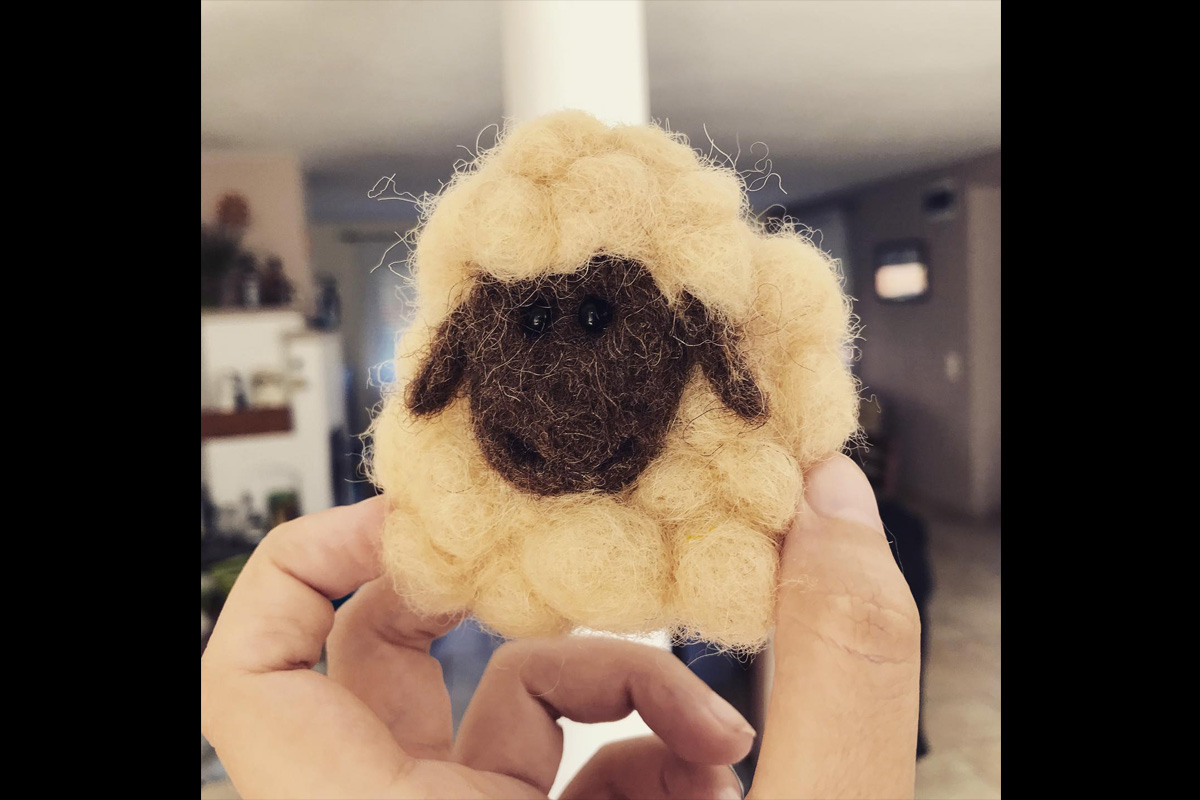
HN: Where did the initial idea of the story come from?
Szandra Pataki: When I really love a story, it takes several months or years to work it out. It has been built element-by-element, sometimes from very random situations. In a previous short film of mine, titled Attitude, we had to unpack a whole room to shoot, and we stacked the elements (chairs, tables, etc) on top of each other. And we thought that it would be great if those furniture disappeared like in the Tetris® game. That was the first point when I started to think about this project.
Sometimes simple situations like this are enough to start something new and see what will happen later. But my main source of inspiration is always my current emotional state, but I think most of the artists work from their life events and reactions to them. In my opinion, filmmakers can create the best movies using those emotional experiences. For me Albert’s character came from the people around me in person and in social media. Everybody thinks they are smarter than others and I was full-on listening to their unnecessary advices about how to live “well”. I wanted to create a character like this, who thinks he is the example to follow, and I wanted to show what could be the real motivation of this behaviour.
During the development of the story, I realized that I also used to behave like this, like Albert, and it was a very serious recognition of myself. I wanted to change, and this experience further built the story. I always wonder that every film I do always shows me a mirror of my life and I can learn from it and develop myself. I love it. So, when the story was built, I started to work with my producers, Krisztina Endrényi and József Berger from the Mythberg Films, and find the possibilities to introduce Albert to the world. It was a very big help and pleasure that the project has won the support of Creative Europe MEDIA.
HN: What do you take care in the most when writing the story of the film?
Szandra Pataki: To show Albert’s personality step-by-step. Such a person, like him, seems very sympathetic at first, who knows a lot about the world and can really help. Later when you get to know him better, you can see behind his mask and discover the real motivation of his behaviour. I wanted to build the story structure like this.
First, Albert is sympathetic, and then we discover his loneliness and at the end he solves this conflict with himself. I considered it important to show different situations and places to which Albert can react.
One place is the office he works at. Here we can see what he shows from himself to the world. He is the best employee, he is a perfectionist and he thinks he is better than the others. The colleagues are the community who is against him, and they are the unreal goal that Albert wants to reach.
There’s another place, Albert’s home, which is a safe place for him and we get to know his real personality, and discover his real loneliness. Here he has a Puli dog, called Pedro, who is also a perfectionist and accepts his owner as he is but Albert doesn’t pay attention to Pedro.
We can see the sharp difference between the two places, where we can realize that Albert doesn’t care about who accepts him (Pedro), but with who doesn’t (the colleagues). So, I wanted to show different situations to unfold Albert’s personality because nothing is black or white.
HN: What is your main goal in having anthropomorphic animal characters?
Szandra Pataki: Because we see the film from Albert’s perspective, I wanted to highlight it with the typical animal behaviours. Albert is an exotic animal, who is taller, more colorful and more uncommon than the barnyard animals like the colleagues. That shows that Albert has a special need to reach happiness and he is a more complicated character. His colleagues have simpler needs because they are a chicken, goat, sheep and donkey. They aren’t stupid, but don’t make their life more complicated than what’s necessary. Yes, I could tell this story with simple human characters too, but using animals we can immediately notice the basic behaviour and the hierarchy among the characters in Albert’s view.
HN: Could you let us know the most important characteristic and goal of the visual design of characters and the universe for the story? And what are your main goals for that?
Szandra Pataki: When I make a film, I always use the stop-motion technique. In other projects I usually sit in front of the PC and do digital 2D animation, but in my projects I like to use real, handmade materials to build up a world. It could be a film, a sculpture or a picture, but I want to be far away from the computer. So it wasn’t a question whether to build the visual world in stop-motion. What was also important for me is to use a very flexible world in Albert, because we are in his mind during the story so we can jump between locations as flexibly as thoughts and emotions alternate in the mind to keep the focus on Albert’s personality development. The Tetris® elements also support Albert’s current emotional worldview, and we can understand the motivations of his acts. So, the whole visual design and the characters personality supports the audience in understanding a very complicated person in a very symbolic way.




